
Trybsz
Elaboration author
Emilia Karpacz
Monuments
Parishes
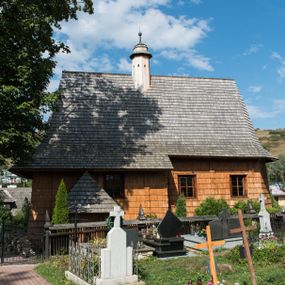
The Church of Saint Elisabeth of Hungary in Trybsz
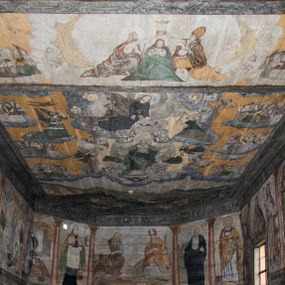
Wall polychrome
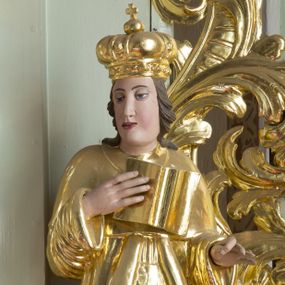
Saint prince (Sculpture)
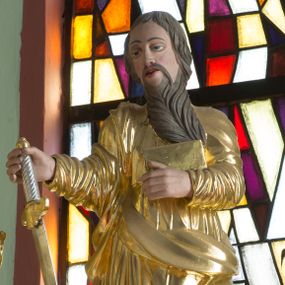
Sculpture of St. Paul
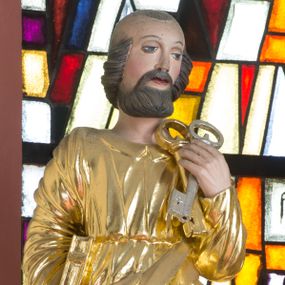
Sculpture of St. Peter
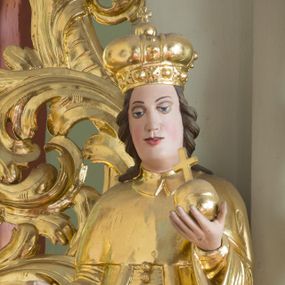
Saint prince (Sculpture)
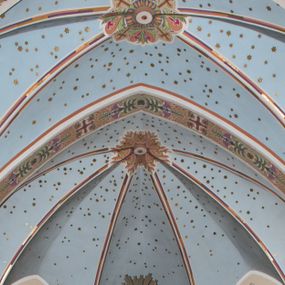
High altar
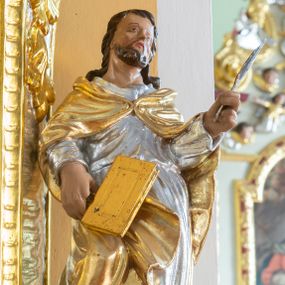
Saint Evangelist (Sculpture)
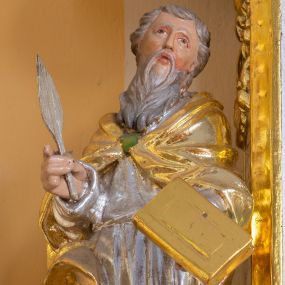
Saint Evangelist (Sculpture)
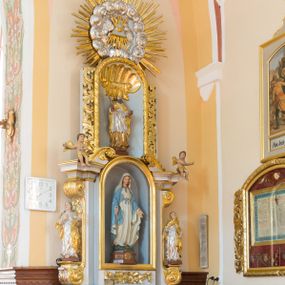
Side altar
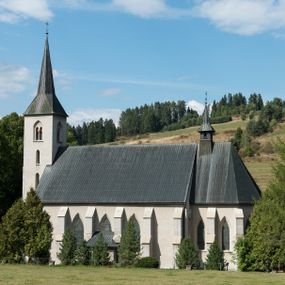
Church under the invocation of Saint Anthony of Padua in Trybsz
History abstract
Already in the 14th century, the Berzeviczy family carried out colonisation in the region of Zamagurie Spiškie on behalf of the kings of Hungary. Before 1320, Władysław the Elbow-high relinquished all claims to the northern Spiš region in favour of Charles Robert in exchange for supporting his efforts to the crown. In 1470, the ownership of the estate with the centre in the Dunajec castle passed into the hands of the Zapolya family. In 1528, John Zapolya, who had already been the king of Hungary for two years at that time, offered the Dunajec demesne to a Polish magnate who supported him, the voivode of Sieradz, John Łaski. In the second half of the 15th or the first half of the 16th century - certainly before 1567 - Trybsz was founded in the territory of the Dunajec demesne, in the valley of the Białka River. The village was established in unknown circumstances, most probably under the principles of Vlach law. Some hypotheses of researchers of the history of the Zamagurie region attribute the foundation of the village to Polish colonists from Frydman, while other connect this event with the Vlach settlement wave. The church in Trybsz was founded before 1567 (the date was engraved on the former altar), but initially, it was a branch church of the parish in Krempachy. In 1589, the ownership of the Dunajec demesne - including Trybsz - was sold by Jerome Łaski (son of John) to George (György) Horváth-Palocsay. Trybsz was mentioned for the first time in writing in a series of documents created in 1589-1583, in connection with this transaction. For the inhabitants, the purchase of Trybsz by the Lutheran Palocsay family meant the replacement of the church located in their village by a Protestant church. As early as 1629, the Emperor issued a special decree, by virtue of which he ordered the return of the seized temples to Catholics. Soon, the heirs of the Danajec estate, Stefan and Andrzej Palocsay, returned to Catholicism, and the church in Trybsz was again under the jurisdiction of the Spiš provosts, this time as a filial church of the parish of St. Stanislaus the Bishop in Frydman. The village developed slowly. At the beginning of the 18th century, there were only 32 houses in the village. In 1769, the inhabitants of Trybsz lived to see the establishment of a separate parish centre under the invocation of St. Elisabeth of Hungary in the village. In 1851 in the Spiš region, including Trybsz, the implementation of the Reichtag's act from 1848 subverting the serfdom of peasants. In 1862 the Niedzica estate was inherited by the descendants of Kornelia of Horvath-Palocsay: Aladara, Gejza, Tivadas and Attyla Salamon. The inhabitants of Trybsz became the owners of the previously exploited land, however lost the access to some of the areas used on the easement principle, as pastures for example. The reality forced them to take up contract jobs. Sometimes they were working in vernacular estates or they had to look for the employment as far as in Budapest or even – in the second half of the 19th century – overseas. After World War I, by virtue of the decision made at The Paris Peace Conference in 1920, 4,6% of Spiš territory, including Trybsz, was incorporated into Poland. The border in the Spiš region was changed again after the outbreak of World War II – in September of 1939 the troops of newly established Slovak Republic entered Zamagurie under the rule of Jozef Tiso who cooperated with the Third Reich. In 1945 the front was crossing Trybsz – retreating German and Hungarian armies were futilely trying to fight the Red Army back. After World War II, by virtue of the so-called Prague Protocol of 20 May 1945 and the Agreement of 13 June 1958, the pre-war border lines were restored. Over the following years, although the population of Trybsz struggled with the difficult reality of the People's Republic of Poland, the village gradually developed, starting with the electrification of the village in 1958.
How to cite?
Emilia Karpacz, "Trybsz", [in:] "The Sacred Lesser Poland Heritage", 2026, source: https://sdm.upjp2.edu.pl/en/places/trybsz-1